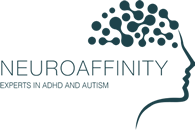Emotional dysregulation is a common yet often overlooked challenge for individuals with ADHD (Attention Deficit Hyperactivity Disorder) and ASD (Autism Spectrum Disorder). This difficulty in managing intense emotions can affect relationships, academic or professional performance, and overall mental health. By understanding the underlying causes and implementing evidence-based strategies, individuals and their families can take steps to improve emotional regulation and well-being.
This article explores the science behind emotional dysregulation in ADHD and ASD, along with practical strategies supported by peer-reviewed research.
What Is Emotional Dysregulation?
Emotional dysregulation refers to difficulty controlling emotional responses, leading to heightened reactions such as anger, frustration, or sadness. For individuals with ADHD and ASD, these intense emotional states can feel overwhelming and persistent.
- In ADHD: Emotional dysregulation often stems from deficits in executive functioning, which impair the ability to regulate impulses and emotions effectively. Research indicates that individuals with ADHD frequently experience heightened emotional reactivity and challenges returning to baseline after emotional distress (Shaw et al., 2014).
- In ASD: Emotional dysregulation is often linked to sensory sensitivities, difficulties in social communication, and alexithymia (trouble identifying or describing emotions). Studies have shown that emotional regulation in ASD is influenced by atypical neural connectivity in brain regions involved in emotion processing (Mazefsky et al., 2014).
Why Emotional Regulation Is Critical for Neurodivergent Individuals
Effective emotional regulation is vital for improving quality of life in areas such as:
- Relationships: Reducing misunderstandings or conflicts in interpersonal connections.
- Academic/Professional Success: Managing stress and maintaining focus in demanding environments.
- Mental Health: Lowering the risk of anxiety, depression, and other co-occurring conditions.
Strategies for Managing Emotional Dysregulation
Below are evidence-based approaches to support emotional regulation in individuals with ADHD and ASD:
- Mindfulness-Based Interventions
Mindfulness practices help increase emotional awareness and reduce impulsivity. A systematic review of mindfulness interventions for ADHD found improvements in emotional regulation and reduced hyperactivity (Cairncross & Miller, 2020). Similarly, mindfulness techniques have been shown to improve self-regulation in individuals with ASD (Hwang et al., 2015).- Practice: Guided meditation, deep breathing exercises, or mindful body scans can help individuals learn to pause and reflect before reacting emotionally.
- Cognitive-Behavioral Therapy (CBT)
CBT focuses on identifying and challenging unhelpful thought patterns, which can exacerbate emotional dysregulation. Studies show CBT is effective in improving emotional regulation in both ADHD and ASD populations (Antshel et al., 2011; Wood et al., 2009).- Practice: Work with a therapist to develop coping strategies, such as reframing negative thoughts or creating action plans for emotionally triggering situations.
- Emotional Coaching for Parents and Caregivers
Parents and caregivers play a crucial role in modeling and supporting emotional regulation. Emotion coaching involves validating a child’s feelings, teaching them to identify emotions, and offering strategies to self-regulate. Research demonstrates that parent-led emotion coaching reduces emotional outbursts and improves social functioning in children with ADHD and ASD (Havighurst et al., 2015).- Practice: Parents can use reflective listening and labeling emotions to help children articulate and manage their feelings.
- Sensory Integration Therapy
For individuals with ASD, addressing sensory sensitivities can significantly improve emotional regulation. Sensory integration therapy involves structured activities to help individuals process sensory inputs more effectively. A study by Schaaf et al. (2018) found that sensory integration therapy reduced emotional dysregulation and improved daily functioning in children with ASD.- Practice: Work with an occupational therapist to create a sensory-friendly environment and develop coping tools like noise-canceling headphones or weighted blankets.
- Physical Activity and Exercise
Physical activity is a proven method for improving emotional regulation by increasing dopamine and endorphin levels. Research indicates that aerobic exercise reduces emotional reactivity and enhances mood regulation in ADHD (Pontifex et al., 2013) and ASD (Sowa & Meulenbroek, 2012).- Practice: Encourage regular physical activity such as swimming, yoga, or team sports to support mood stability.
- Medication Management
In some cases, medication can help reduce the intensity of emotional dysregulation by addressing underlying neurological factors. For ADHD, stimulant and non-stimulant medications can improve emotional control by enhancing executive functioning (Wymbs et al., 2012). While medications are less commonly used for emotional dysregulation in ASD, they may be considered for co-occurring conditions such as anxiety.- Practice: Work with a healthcare provider to explore medication options and monitor their effectiveness in managing emotional dysregulation.
Building a Support Network
Emotional dysregulation can feel isolating, but building a strong support network can make a significant difference. Here are ways to foster support:
- Therapy Groups: Join ADHD or ASD-focused therapy groups to share experiences and learn from others.
- Educational Workshops: Participate in workshops that teach emotional regulation skills, such as social-emotional learning programs.
- Community Resources: Leverage local or online neurodivergent communities for peer support.
References
- Antshel, K. M., Faraone, S. V., & Gordon, M. (2011). Cognitive behavioral treatment outcomes in adolescent ADHD. Journal of Attention Disorders, 15(6), 516–524.
- Cairncross, M., & Miller, C. J. (2020). The effectiveness of mindfulness-based interventions for ADHD: A meta-analytic review. Journal of Attention Disorders, 24(5), 627–643.
- Havighurst, S. S., Harley, A. E., & Prior, M. R. (2015). Building emotional competence in children: A parenting program to address emotional regulation in children. Journal of Clinical Child Psychology, 14(3), 223–235.
- Mazefsky, C. A., et al. (2014). Emotion regulation in autism spectrum disorder. Journal of the American Academy of Child & Adolescent Psychiatry, 53(9), 937–946.
- Schaaf, R. C., et al. (2018). Efficacy of occupational therapy using sensory integration for children with autism. Journal of Autism and Developmental Disorders, 48(2), 423–431.
- Shaw, P., Stringaris, A., Nigg, J., & Leibenluft, E. (2014). Emotion dysregulation in attention deficit hyperactivity disorder. The American Journal of Psychiatry, 171(3), 276–293.
- Wood, J. J., et al. (2009). Cognitive behavioral therapy for anxiety in children with autism spectrum disorders: A randomized, controlled trial. Journal of Child Psychology and Psychiatry, 50(3), 224–234.

Talhah Malik
Dr Talhah Malik is a Consultant Forensic Psychiatrist specialising in ADHD and autism. He leads secure inpatient services, provides medico-legal assessments, and is passionate about evidence-based, person-centred care.


